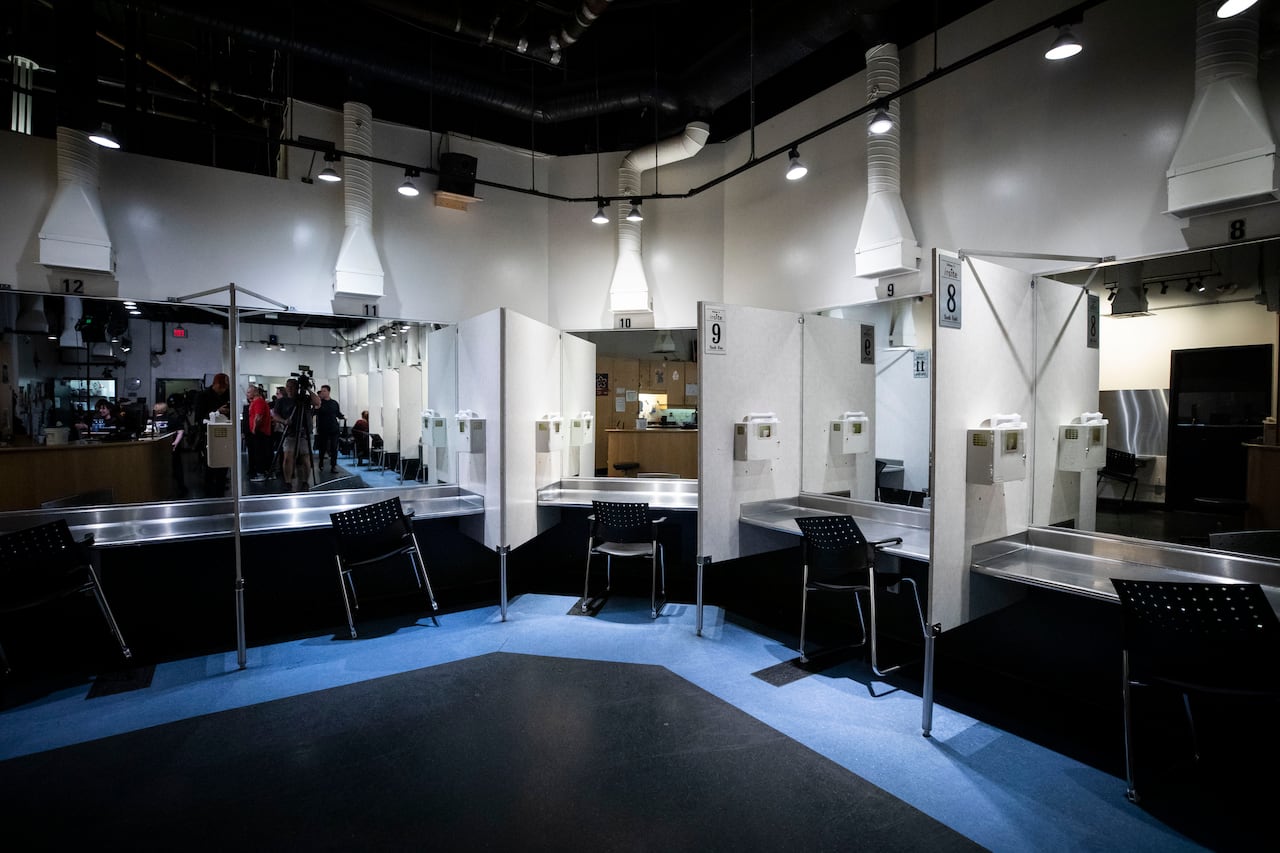Harm reduction and recovery can coexist: Expert

Photo via CBC.
As the B.C. general election looms, John Rustad, leader of the B.C. Conservative Party has vowed to eliminate supervised consumption sites (SCSs) across the province and replace them with intake centres focused on treatment and recovery should he be elected.
Supervised consumption sites are places where people can bring their drugs to use in a clean, safe environment. According to Health Infobase Canada, using SCSs prevents overdose and reduces the spread of infectious diseases like HIV.
“Eby’s soft-on-crime, soft-on-drugs approach isn’t the answer — it’s the problem,” Rustad said in a press release. Nonetheless, Premier David Eby maintains his support for SCSs by stating that “closing these sites would be a real mistake.”
The first SCS in North America, Insite, opened in Vancouver back in 2003. Located in Vancouver’s Downtown Eastside neighbourhood, Insite has served the community for over 20 years by offering drug checking, supervised consumption, case management, system navigation, and referrals to other community services. Insite is an exemplary model of harm reduction services — its database, implemented in 2004, shows that there have been no overdose deaths at its facility to date.
However, the toxic drug crisis continues in B.C.
According to the Ministry of Public Safety and Solicitor General, more than 1 600 British Columbians died in the first eight months of 2023 due to unregulated and contaminated drugs. Fentanyl-contaminated drug supply is the leading cause of death in B.C. for persons aged 10–59. According to the B.C. government, overdoses account for more deaths than suicides, accidents, homicides, and natural disease combined, with more than 13 790 British Columbians lost to unregulated drug deaths since April 2016, when a public health emergency was first declared.
“With the unregulated drug supply becoming more and more toxic, the risk to people in the community has grown exponentially worse in the years since 2003,” said Dr. Patricia Daly, Chief Medical Health Officer at Vancouver Coastal Health. “As a result, we’ve had to evolve the harm reduction services we’re offering at Insite and in the community because they are needed now more than ever.”
Nevertheless, Rustad referred to Eby’s government as “out-of-touch” for supporting SCSs. He said that, “instead of funding real solutions like addiction treatment and recovery, Eby’s plan continues to turn our communities into playgrounds for addicts while families are left to fend for themselves.” Rustad claimed that the current government thinks the “answer to a crisis is more drugs, more inhalation sites, and more enabling.”
Conservatives like Rustad, as well as Conservative Party of Canada leader Pierre Poilievre, have referred to safe consumption sites as “drug dens” and have vowed to close them. “We will defund [SCS],” said Poilievre. “There will not be a single taxpayer dollar from the Poilievre government going to drug dens. Every single penny will go to treatment and recovery service, to bring our loved ones home drug-free.”
Dr. Jaime Arredondo, Canada Research Chair in Substance Use and Health Policy Research, told the Martlet that harm reduction and treatment aren’t mutually exclusive.
“It is a misguided perception that harm reduction and treatment cannot coexist,” said Arredondo. In fact, he explained, “people who attend overdose prevention sites or safe consumption services are more likely to go to treatment in the long run.”
The B.C. Conservative party’s approach focuses on re-criminalizing hard drugs, reversing the current decriminalization policies, and prioritizing treatment and recovery services over “enabling addiction.” Rustad announced his commitment to involuntary treatment for individuals, especially children, suffering from severe addictions, as by the “Compassionate Intervention Legislation.”
As B.C.’s general election approaches on Oct. 19, the question of how to tackle the opioid crisis continues to divide opinions.








